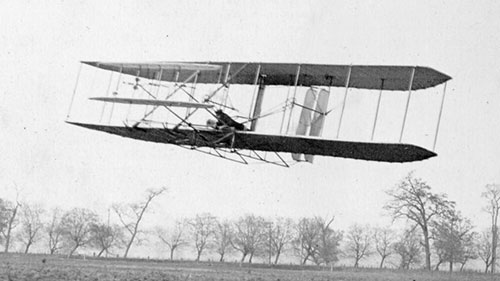
A version of this article recently appeared in our free newsletter, to subscribe click here.
OK – upfront, the data for the Wright Flier I am using is taken from the Wright Flier Model B wikipedia page (https://en.wikipedia.org/wiki/Wright_Model_B).This was the last iteration of the original Wright Flier configuration and was sold in 1910. Their famous first flight was in 1903 so this places seven years between the initial flight of the prototype (the first powered flight in human history) and the Model B.
To put this in context Joby aviation was started in 2009 (thirteen years ago)and started flying full scale unmanned prototypes in 2017 (five years ago).
The timelines are a little different but more than fair as Joby has the accumulated knowledge of the previous century of the global aeronautic global history of technical development and computing power trillions of times greater than a slide rule.
So this comparison is horribly unfair in favor of Joby, and other eVTOL developers. It is also worth pointing out that the Wright brothers were incredibly inventive and the way that they developed their original aircraft and proceeded towards their first flight was nothing short of astonishing.
So we will use three standard performance comparisons, these are maximum range, useful load and cruise speed.
Maximum Range Comparison
To be fair it is clear that the Wright brothers were not subject to VFR/IFR reserves. Considering the numbers published by the eVTOL manufacturers and knowing battery energy density I am confident many eVTOL manufacturers are also ignoring regulatory reserve requirements…..so they are representing each manufacturer at their word.
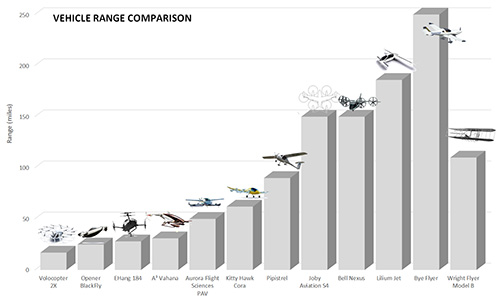
Useful Load
Useful load is not the ‘payload’, but for eVTOL as the mass of the ‘fuel’ cannot be varied so the useful load is effectively the same as the payload – unless you can vary the amount of batteries carried to modify the amount of payload you can carry. This is one of the fundamental limitations of eVTOL – the payload is fixed at a single value and the range can only be varied according to the mass of the payload and not the additional fuel you can carry as the payload reduces.
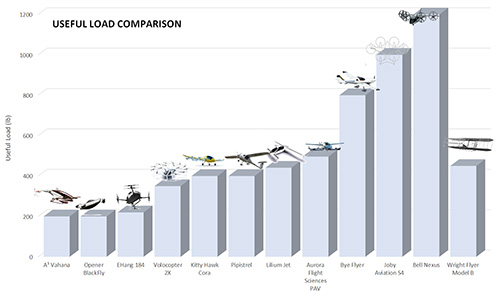
Speed
This is one area where modern vehicles can excel compared to the first powered aircraft configuration ever flown. Both in terms of induced drag and parasitic drag.
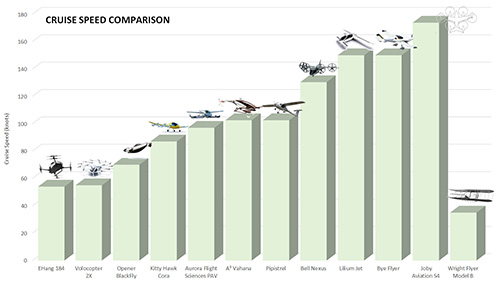
Conclusion
In terms of range and useful load the Wright Flier does pretty well; surprisingly well considering the over 100 years between the products being compared. The level of technology employed in current products and the analytical methods and design tool available to us today.
To make a better comparison I have included the Diamond DA40 (https://en.wikipedia.org/wiki/Diamond_DA40_Diamond_Star) and the Robinson R44 (https://en.wikipedia.org/wiki/Robinson_R44) in the graphs.
Not surprisingly the energy density of liquid hydrocarbon and modern aerodynamics make a huge difference
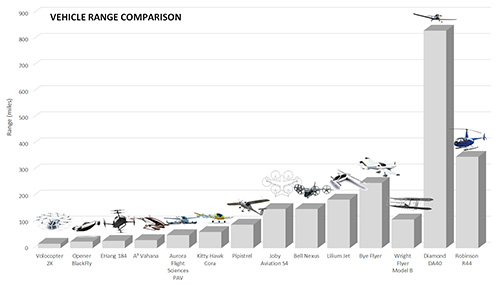
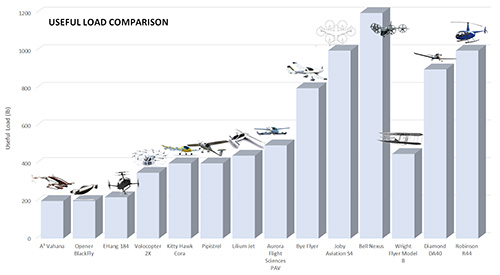
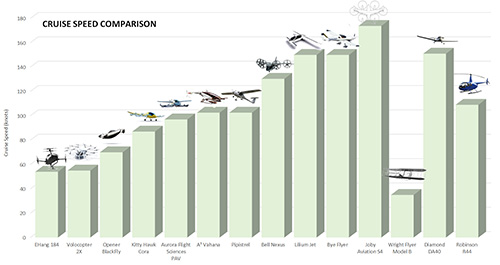
What this does throw into sharp relief is how the adoption of batteries are driving aircraft performance backwards for range and useful load despite the advances in aircraft and propeller aerodynamics over the last 100 years.
The question remains – is there is a market for these aircraft with positively regressive performance Is the perception of virtue of relocating your pollution to a power generating plant some distance away worth the loss in performance?
If you could cut your iPhone data plan to ¼ for current data transfer speed if it appeared to help save the planet would you do that?
I didn’t think so.

summarazin all results classic helicopter design seems to be winner 😀